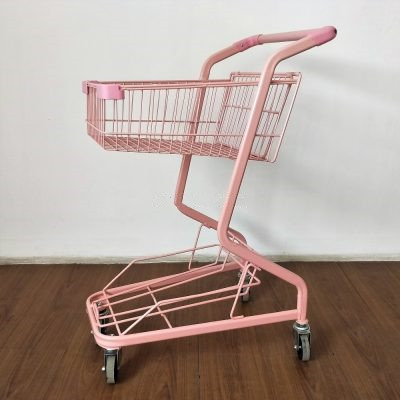1. Workflow Analysis: Conduct a thorough analysis of your workspace and processes to identify where platform trolleys can be most effectively integrated. Determine the most common tasks that involve material movement and identify potential bottlenecks or inefficiencies.
2. Strategic Placement: Strategically position platform trolleys in areas where they will be frequently needed. This reduces the time and effort spent retrieving trolleys when tasks require their use.
3. Load Planning: Plan and organize loads on the trolleys to optimize their capacity. Arrange items in a way that maximizes space utilization without compromising stability. Avoid unnecessary trips by loading items efficiently.
4. Task Batching: Group similar tasks that require the use of platform trolleys together. This minimizes the time spent switching between different activities and improves overall workflow efficiency.
5. Employee Training: Provide proper training to employees on how to use platform trolleys safely and effectively. Educate them on best practices, load capacities, maneuvering techniques, and safety precautions.
6. Maintenance Schedule: Implement a regular maintenance schedule for the trolleys. Well-maintained trolleys are less likely to cause delays due to breakdowns or malfunctions. This includes lubricating wheels, checking brakes, and inspecting for damage.
7. Utilize Technology: Consider using technology to track the movement of trolleys, especially in larger industrial settings. This can help optimize routes, allocate resources, and identify areas for improvement.
8. Ergonomics and Safety: Prioritize the safety and comfort of employees. Invest in ergonomic trolleys that reduce strain on workers’ bodies during handling. This can lead to increased productivity and reduced risk of injuries.
9. Continuous Improvement: Encourage a culture of continuous improvement. Regularly solicit feedback from employees who use the trolleys and implement their suggestions for optimizing processes.
10. Lean Principles: Apply lean principles to your processes. Identify and eliminate waste, whether it’s unnecessary movement, waiting times, or inefficient loading/unloading practices.
11. Time Management: Create a schedule that allocates specific time slots for material handling tasks. This prevents interruptions and helps employees focus on other critical tasks during designated periods.
12. Collaborative Planning: Collaborate with team members to plan material movement and trolley usage. Coordination can prevent conflicts and ensure that trolleys are available when needed.
13. Feedback Loop: Establish a feedback loop to gather insights from employees about their experiences with platform trolleys. This can provide valuable insights into areas that need improvement.
14. Data Analysis: Collect and analyze data related to trolley usage, including frequency, distance traveled, and time spent. This information can help you make informed decisions to further optimize workflows.
By implementing these strategies, you can effectively maximize work efficiency with platform trolleys, leading to smoother operations, reduced costs, and improved overall productivity



















